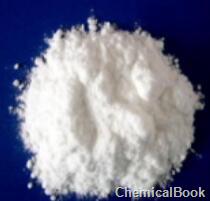Background and overview[1][2]
4-Hydroxyphenylboronic acid is an organic intermediate that can be prepared from 4-hydroxyphenylboronic acid in three steps. Can be used in coupling reactions.

Preparation[1]

Preparation of 4-hydroxyphenylboronic acid:
In a 100ml three-necked bottle, add 17g (0.1mol) 4-bromophenol, 16.5g (0.11mol) dimethyl tert-butyl chlorosilane, 30ml DMF, 20ml triethylamine and 0.1gDMAP. React at room temperature for 24 hours. After the reaction is completed, add equal volumes of water and petroleum ether, let stand and separate, remove the aqueous phase, wash with water until neutral, and rotary evaporate to remove the solvent to obtain a colorless oily liquid.
In a 250ml three-necked bottle, add 2.6g (0.11mol) Mg chips, a small particle of crystalline iodine and 50ml tetrahydrofuran in sequence. Mix 28.70g (0.1mol) 1-bromo-4-[(1,1-dimethylethyl)dimethylsiloxy]-benzene and 20ml tetrahydrofuran for later use. Add a small amount of the above solution dropwise to initiate the Grignard reaction (if it cannot be initiated, heat slightly to initiate the reaction), and then add the remaining solution dropwise while stirring. Control the dropping speed, use an ice water bath to control the temperature, and keep the reaction temperature below 35°C. After the dripping is completed, stir at room temperature for 1 hour. Cool the system to -65°C in an acetone-liquid nitrogen bath, add dropwise a solution of 11.44g (0.11mol) trimethyl borate in 60ml tetrahydrofuran, and control the temperature at -60°C. After the dripping is completed, stir and naturally raise the temperature to -30°C, and acidify with concentrated hydrochloric acid until it becomes acidic (PH=1). Transfer the reaction solution to a separatory funnel, add 100 ml of ethyl acetate, let stand for liquid separation, wash the organic phase with saturated brine until neutral, separate the aqueous phase, transfer the organic phase to a 250 ml three-necked flask, add 28.71g (0.11 mol) tetrabutylammonium fluoride, react at room temperature for 24 hours, and the reaction is completed. Transfer to a separatory funnel, use saturated brine until neutral, separate the aqueous phase, rotary evaporate the organic phase to remove the solvent, and recrystallize with petroleum ether to obtain a white solid. Yield 68%; 1H-NMR (500MHz, DMSO-d6): 7.58(d, 2H), 6.95(d, 2H), 5.35(s, 1H).
Apply[2-3]
CN201810963669.9 provides a high-efficiency treatment agent for papermaking wastewater, which is made of the following ingredients in parts by weight: 10-20 parts of phthalamide ferrocene polyphenylene ether, 10-15 parts of mesoporous Ti-Al-O , 30-40 parts of modified polyether amine; the phthalamide ferrocene polyphenylene ether is composed of 1,1′-dibromoferrocene, 4-hydroxyphenylboronic acid, 4,5-dichlorophthalamide Prepared through chemical reactions. The high-efficiency treatment agent for papermaking wastewater prepared by the invention has more stable performance, better wastewater treatment effect, higher efficiency, lower cost, less usage, less environmental pollution, and has antibacterial, antifouling and anti-corrosion properties. advantage.
CN201710496208.0 discloses a photonic crystal hydrogel tear sugar sensor; the sensor is composed of polystyrene microspheres (PS) 1, polyvinyl alcohol hydrogel (PVA) 2, 4-hydroxyphenylboronic acid (4 -BBA)3, rigid contact lenses 4 are made. The tear sugar sensor of the present invention can be worn directly. When glucose molecules are combined with the phenylboronic acid group of 4-BBA, PVA shrinks and swells, driving photons between PS microspheres embedded in the PVA gel. The band gap changes, causing the corresponding diffracted light wavelength to change, and its color to change visible to the naked eye. This sensor is used to detect tear sugar. It has the advantages of safety, effectiveness, non-invasiveness, good repeatability, portability and intuitiveness. The detection data provides a scientific and objective basis for non-invasive real-time monitoring of whole body glucose levels.
Main reference materials
[1] [China invention, China invention authorization] CN201310689152.2 Two-photon absorption materials and preparation methods containing diphenylethynylcyclopentadiene iron salts
[2] CN201810963669.9 A high-efficiency treatment agent for papermaking wastewater and its preparation method
[3] CN201710496208.0 Photonic crystal hydrogel tear sugar sensor

 微信扫一扫打赏
微信扫一扫打赏

